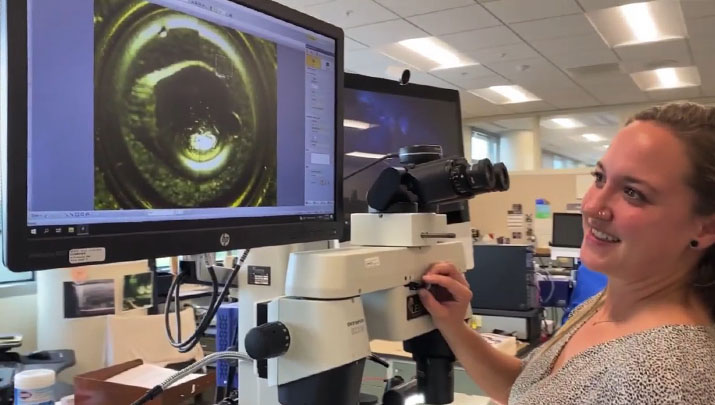For BCA's forensic scientists, bringing justice to victims is its own reward
Join us in celebrating the team during National Forensic Science Week
Sept. 22, 2022

Almost any time a crime happens in Minnesota, investigators are left with hundreds of questions. Not only “Who dunnit?" but also “Was this the gun the perpetrator used?" “Where were they standing?" and "Does this strand of hair match our suspect?" among others.
The team at the Forensic Science Service at our Bureau of Criminal Apprehension (BCA) is laser-focused on answering those questions — sometimes with actual lasers.
Join us in celebrating the team this week during National Forensic Science Week. This week is set aside to recognize the contribution that forensic science makes to the criminal justice system.
For the forensic scientists at the BCA, the work itself is its own reward.
"The reason I find a forensic science career so rewarding is that it's applied science, and I never have to question the value of what I do. I come into work every day and I know that I am trying to solve crimes and bring justice to victims," said Nat Pearlson, the assistant lab director for the Firearms Section.
BCA's Forensic Science Services does incredible work, following established best practices to test everything from bullet casings to latent fingerprints to DNA.
Pearlson works in the firearms lab. The lab houses thousands of firearms of every make and model. Scientists use the firearms to link bullets, shell casings and weapons to specific crimes. It's one piece of the puzzle our investigators use to find and arrest those responsible for committing gun violence.
Another piece is a laser trajectory system. Scientists use the bullet holes left at crime scenes to highlight the path a bullet may have traveled. This can show investigators where the shooter was standing and lead them to further evidence like bullets or shell casings.
Our experts can help solve crimes by linking people, places, and things involved in a crime by the microscopic materials they leave behind.
In the Trace Section of Forensic Science Services, for example, they can determine:
- If a hair found on a hat left at a scene matches a known hair sample from a suspect.
- If glass found on a suspect's clothes compares to glass from the scene.
- If shoeprints left at a scene could be from shoes the suspect wore.
- If tape from a bound victim matches a roll of tape from the suspect's car.
BCA's scientists also provide written reports of results and subsequent expert testimony if necessary. That testimony can be key to victims across the state getting justice.
To learn more about BCA's Forensic Science Services, visit the
BCA Facebook page to watch short videos featuring the work done in our labs.

